(Drone footage courtesy of Eric Wilson, LAMP Volunteer)
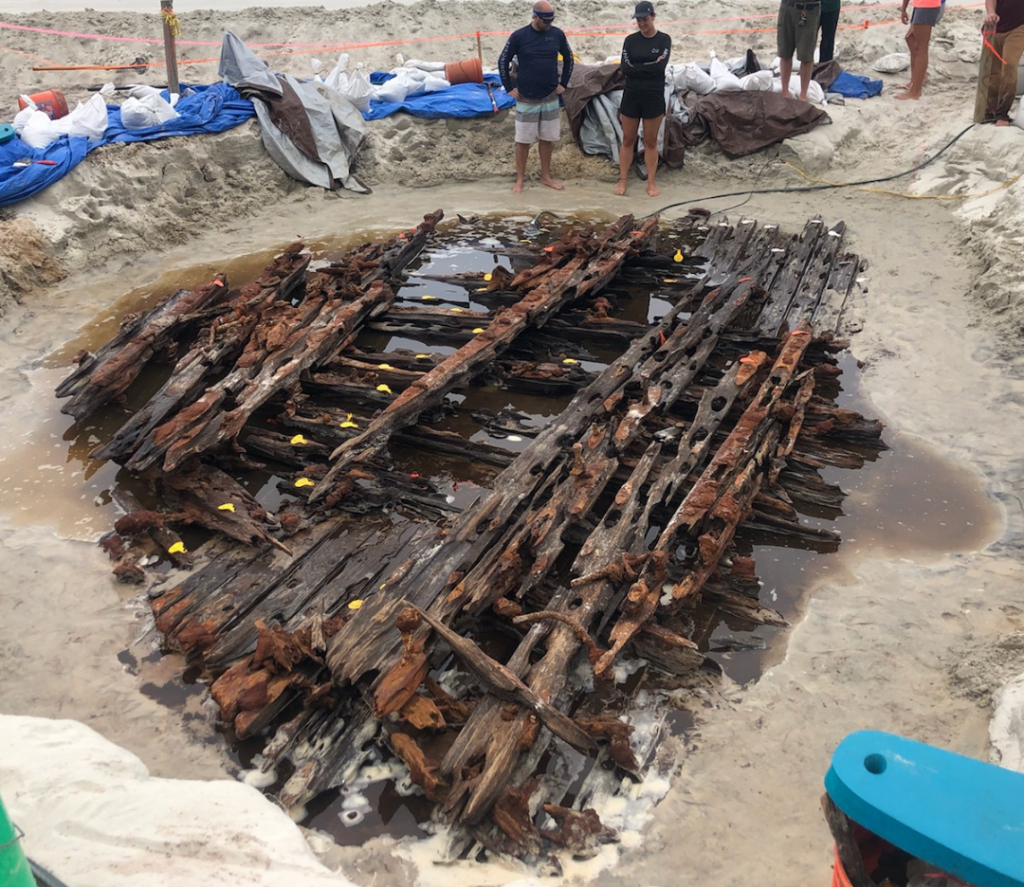
The entirety of the Crescent Beach Shipwreck
Maritime archaeologists from the St. Augustine Lighthouse & Maritime Museum’s research arm, Lighthouse Archaeological Maritime Program (LAMP), have documented the entirety of the Crescent Beach Shipwreck site. In November 2020, LAMP was notified of a previously unknown shipwreck that had become exposed on the southern end of Crescent Beach. Local beachgoers noticed the wooden wreckage and posted pictures on social media. One individual called the St. Augustine Lighthouse & Maritime Museum, stating the wreckage first became exposed the day prior after a week of heavy erosion from nor’easters. LAMP Director, Chuck Meide, visited the site that day, confirming wooden hull remains.
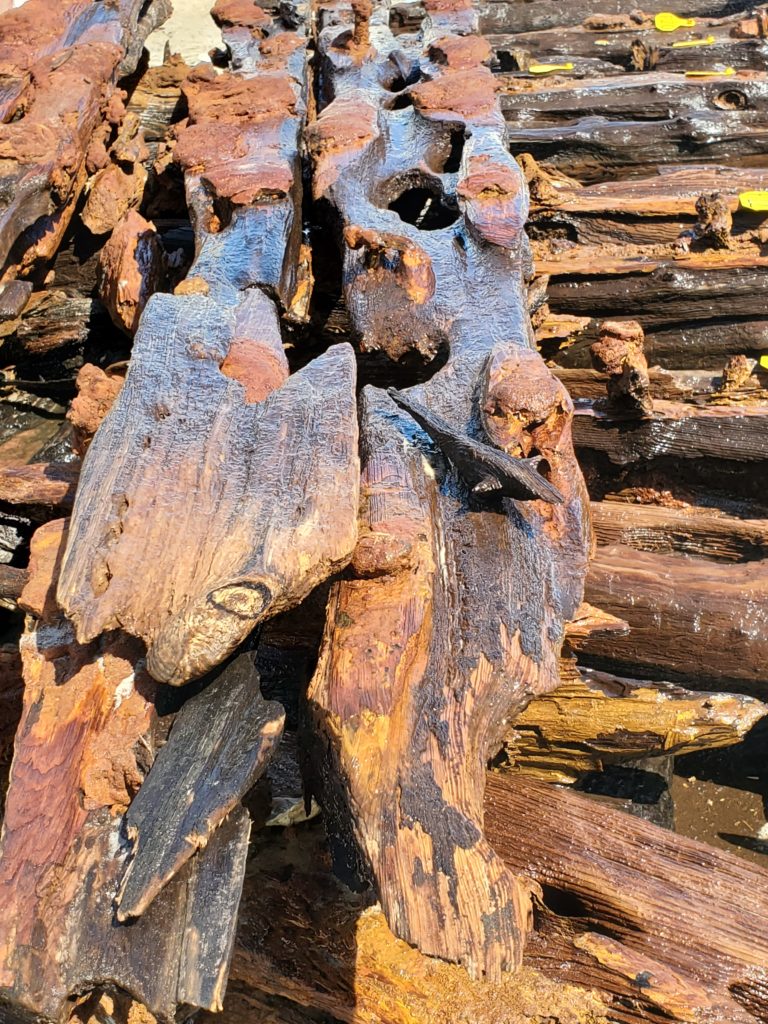
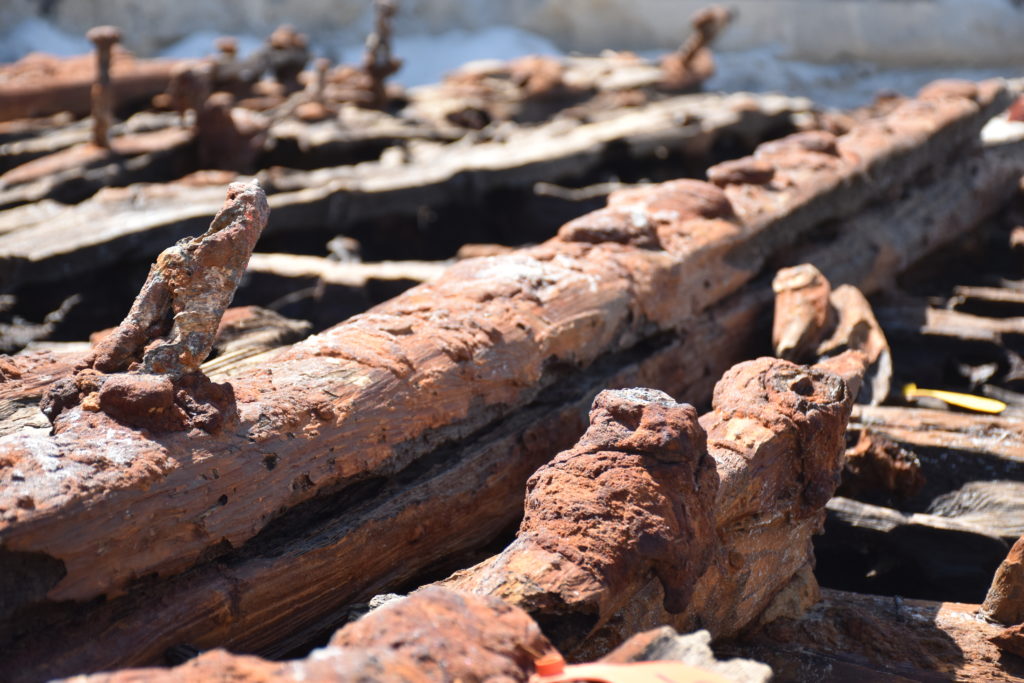
Wooden hull remains (left & right)
The LAMP archaeologists had four days to assess the site and carried out limited test excavation by hand to expose portions of the buried hull to better understand its construction, cultural affiliation, function, and age. No historic artifacts unrelated to the hull were observed, and a number of samples were collected for analysis and wood species identification. After a closer look, various features, including iron bolts, one or more wooden treenails, and at least two copper alloy planking spikes, suggested the hull most likely represents a 19th-century merchant sailing vessel. The timbers were cut to the inch, suggesting the vessel was built in America, Canada, or Britain. The hull appears to have been constructed robustly with numerous heavy stringers and thick planking, indicating it may have been intended for the lumber trade or a similar bulky cargo. Historical research revealed a likely identification for this wrecked vessel, the Caroline Eddy.
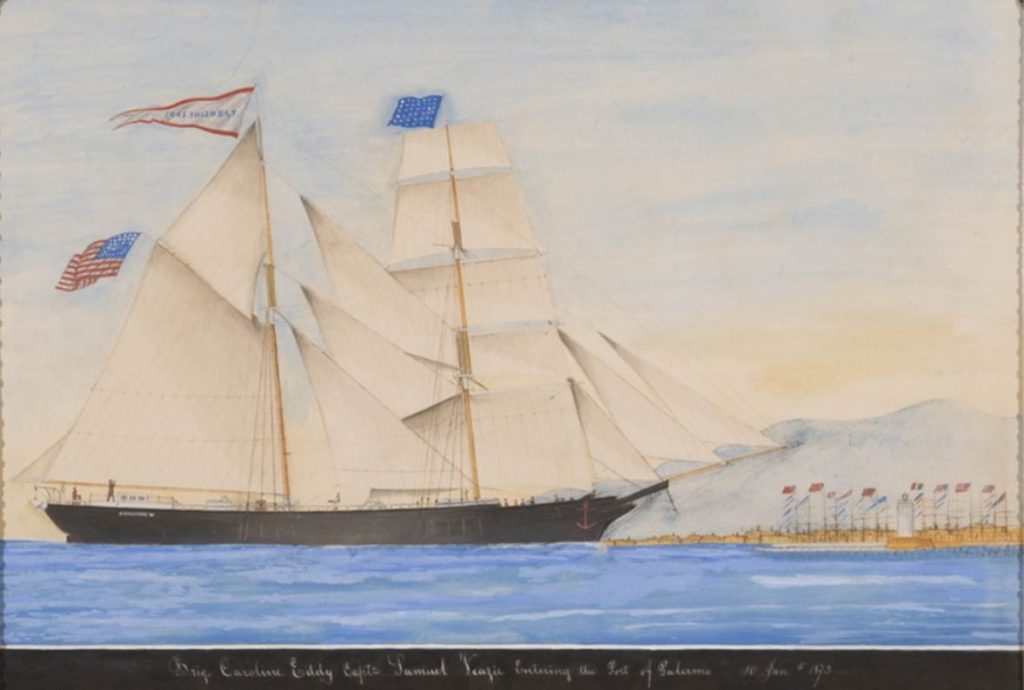
Painting of the Caroline Eddy entering the port of Palermo, Sicily, by Joseph Monasteri in 1873.
(Photo courtesy of the Penobscot Marine Museum)
The Caroline Eddy was a merchant brig or brigantine built in Brewer, Maine in 1862, as a Union supply ship during the Civil War. A variety of shipping papers, charter notices, registration papers, insurance documents, passenger manifest declarations, letters, a Lighthouse Keeper log entry, and a diplomatic note have been found related to the history of this vessel. Among these items were a series of newspaper articles from across the Eastern Seaboard that recount the wrecking of this ship in great detail.
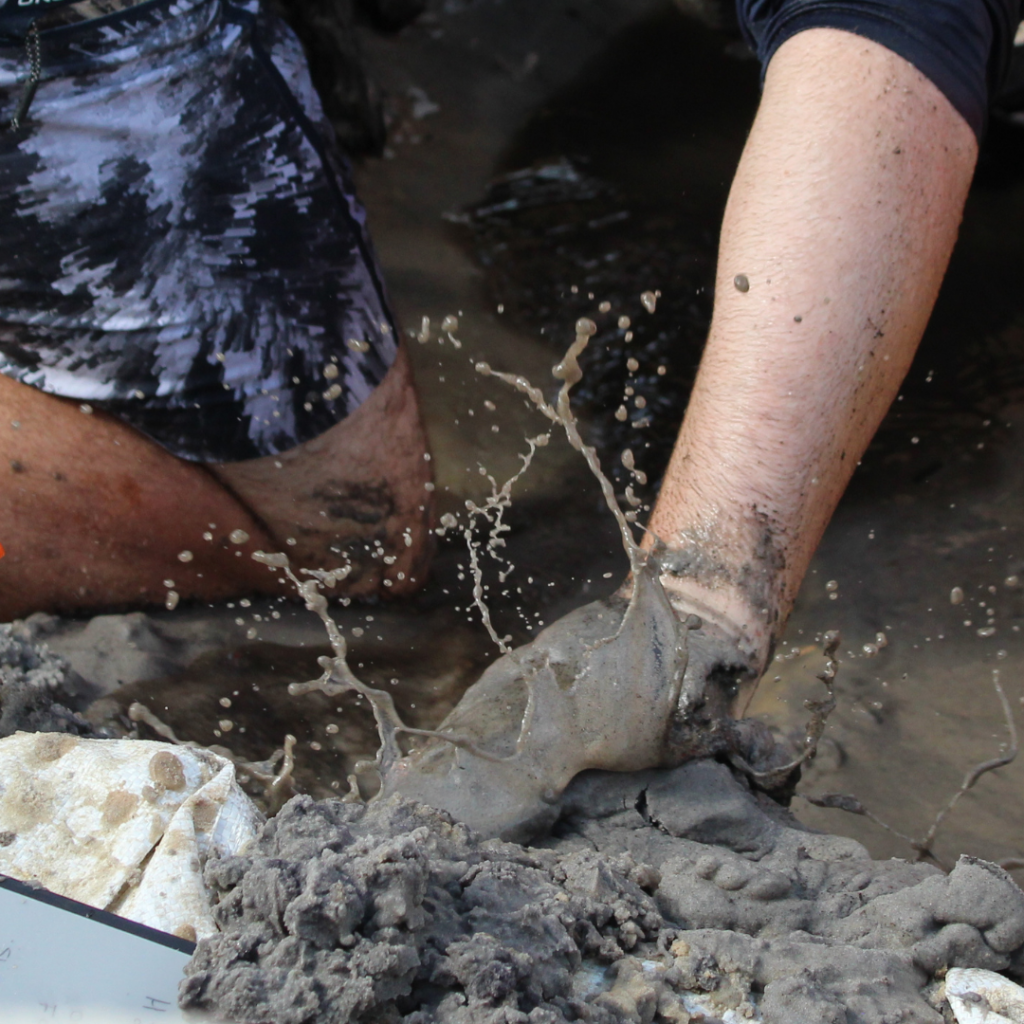
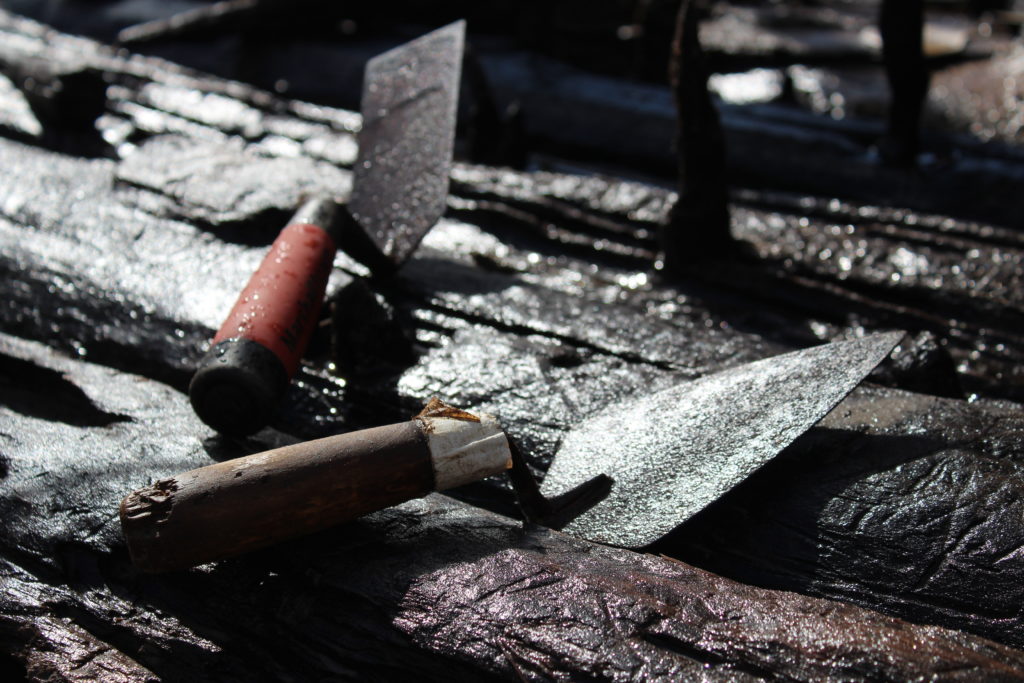
Archaeological Conservator, Andrew Thomson, digs out mud (left) and excavators set their trowels down while resting (right)
(Photos courtesy of Olivia Garvey, Communications Intern)
In 1880, the Caroline Eddy departed from Fernandina Beach, Florida, with lumber cargo, heading towards Philadelphia, Pennsylvania. Unbeknownst to the crew, the vessel was sailing directly into a hurricane. As the weather worsened, a monstrous wave struck the ship shortly after midnight on the morning of August 30. The devastating wave damaged the vessel, and it wrecked. Stranded offshore, the ship likely broke apart at some point, and pieces of the hull would most likely have come ashore a short distance to the north of the Matanzas Inlet, where the Crescent Beach Wreck is located. “There’s no way to be certain, but we believe it to be remnants of the Caroline Eddy,” says Chuck Meide, Director of Archaeology at the St. Augustine Lighthouse & Maritime Museum.
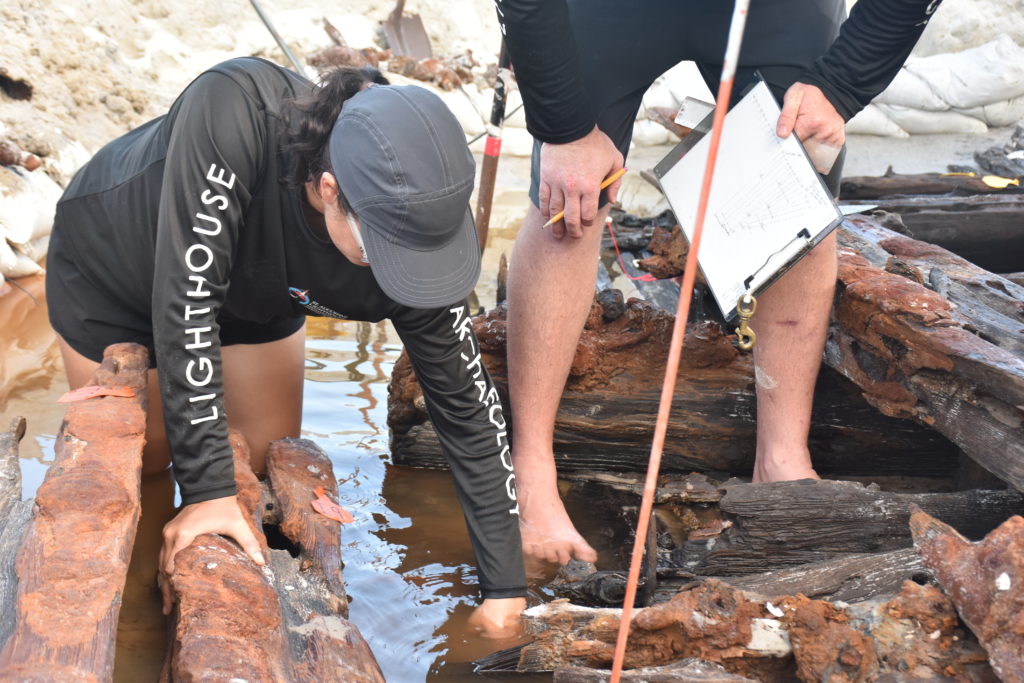
Dive Safety Officer, Airielle Cathers, removes sediment from the wreck to continue recording
On Monday, August 30, 2021, LAMP archaeologists began excavating the wreck, exactly 141 years after it sunk. Maritime archaeologists and volunteers dug every day for two weeks at the Crescent Beach shipwreck site, making major progress. Virtually all of the hull was cleared of sand, allowing LAMP staff to complete photogrammetry, which is the science of recording 3-D information from photographs. You can view previous recordings by clicking here.
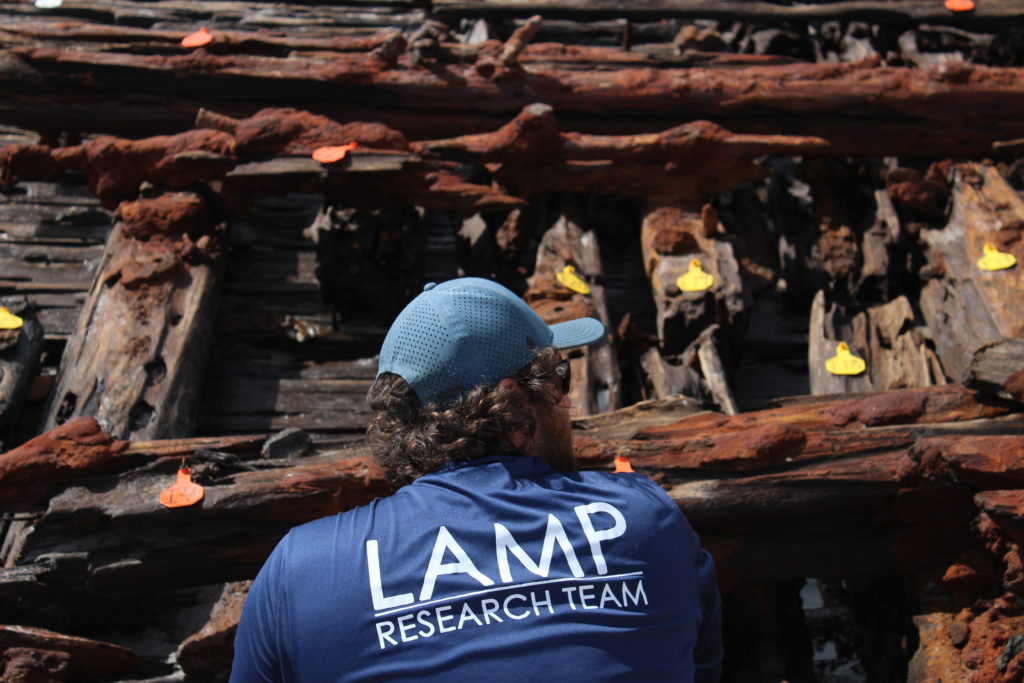
Archaeology Administrative Director, Nick Budsberg, surveys the shipwreck as he begins photogrammetry
(Photo courtesy of Olivia Garvey)
Lastly, staff completed recordings and took samples of the wooden hull and copper sheathing found on the vessel, which are now going through a process to further our knowledge of the vessel. With the story of the Caroline Eddy now living on through LAMP’s research, we look forward to sharing the discoveries our team has made, as they become available. We want to give a special thank you to the LAMP team and all of the dedicated volunteers. St. Johns County replenished beach sand in the area of the Crescent Beach Wreck in September 2021, which should help preserve the hull remains. The wreck is covered once again and preserved for many years to come!

